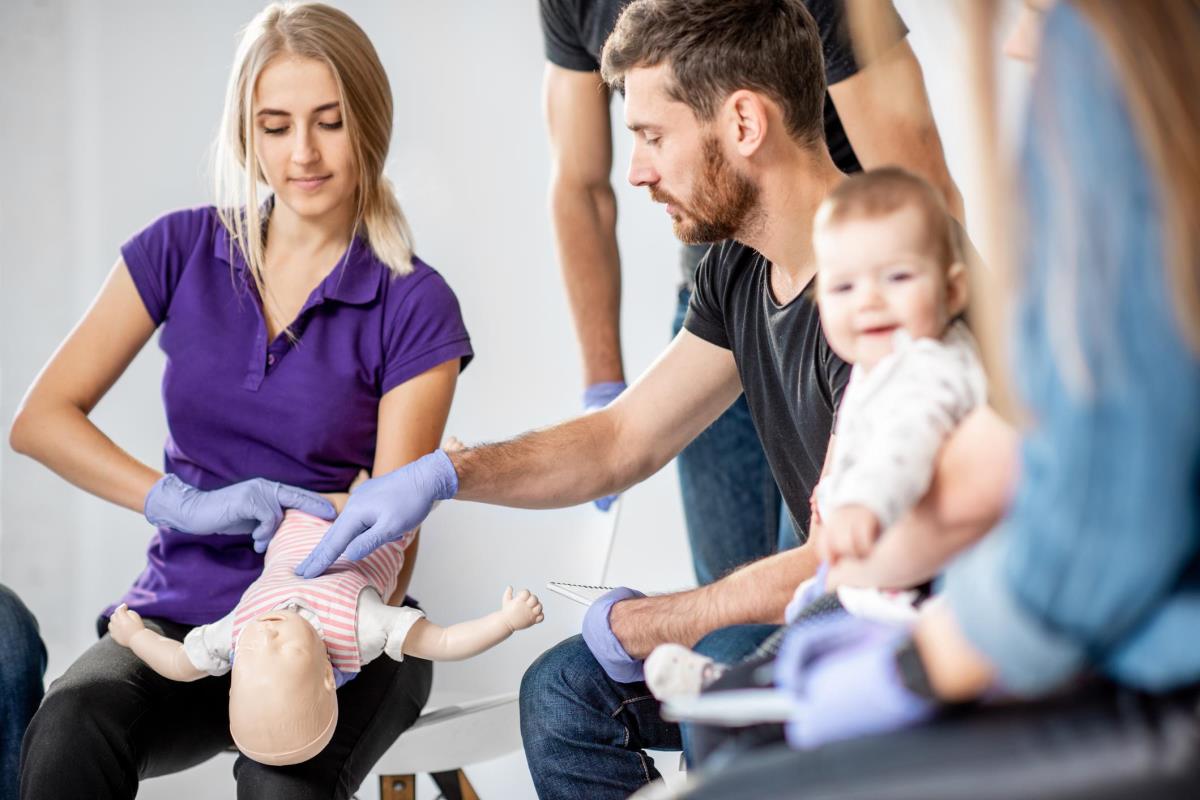Essential Baby First Aid – 5 Top Tips
Our partners at TigerLily provide five top tips for parents and parents-to-be.
---
Being a new parent can be stressful enough, especially when you think about how you should act if a medical emergency arose.
Knowing some basic first aid skills can make the world of difference. So these top tips will help guide you on the correct actions to take when prompt, effective first aid is essential.
1. For all medical emergencies, DON’T PANIC
- Try your best to remain calm and focused
- Take a deep breath and then fully assess the situation in front of you
2. WHEN ASSESSING THE SITUATION follow D.R.A.B.C.
DANGER – Ensure that you and the baby are safe from any danger
RESPONSE – Is the baby responsive? Do they respond to your touch or voice? If not, shout for help, ask someone to call 999 or 112
AIRWAY – If the baby is unresponsive, tilt their back head slightly, to allow oxygen into the lungs
BREATHING – Look, listen and feel for normal breathing. If you discover the baby is NOT breathing normally, you will need to start CPR immediately – see Top Tip 3.
If the baby is breathing normally, fantastic – this is a positive outcome and you can now move on to next stage.
CIRCULATION – Once you’ve established the baby is breathing normally, check for any signs of bleeding. If there is bleeding stem the flow to preserve circulation.
If the baby’s circulation is good, ensure their airway remains open and hold the baby in your arms, facing you, with their head supported and tilted slightly downwards. This is the Recovery Position for babies. Continue to monitor their airway until help arrives.
3. If CPR is required, BE POSITIVE
CPR will be needed if the baby is not breathing normally.
However, recent studies show that many parents are too afraid to perform CPR, in case they cause harm or because they don’t know the correct procedure.
Remember that if a baby is not breathing normally, their situation cannot get much worse. So, doing something is way, way better than doing nothing. You will also have the ambulance crew on the phone, talking you through each step as you go and they will also stay on the line until they arrive.
Effective CPR helps to circulate oxygen to the lungs and then on to the brain – and without oxygen, brain cells will start to die.
- So, start by giving the baby 5 RESCUE BREATHS.
- To perform rescue breaths, ensure the baby’s airway is open and seal your mouth over the baby’s mouth and nose.
- Steadily blow the amount of breath you can hold in your cheeks into the baby’s mouth for about 1 second, just enough to see the chest rise.
- Do this 5 times
Having breathed oxygen into the baby’s lungs, you now need to circulate that around the body and to the all-important brain. You do this by performing CHEST COMPRESSIONS (this is the part many parents are afraid of).
- Using the index and middle fingers together, press them into the centre of baby’s chest / sternum to a depth of at least a third
- Do this 30 times at a rate of around two per second. Don’t worry about the numbers here, just remember to push at a nice regular rhythm and deep enough to squeeze the heart
Then commence a cycle of 2 rescue breaths to 30 compressions.
Keep going with this until:
- help arrives
- you are too exhausted to continue
- the baby shows obvious signs of life or vomits
Hopefully you won’t find yourself in a situation where you will find an unresponsive baby but perhaps this can give you some knowledge of how-to best deal with an unresponsive baby and give them the best chances of survival. Remember to stay calm, take a breath, get help and follow DR ABC.
4. If a baby shows signs of CHOKING – Act Quickly and Assertively
If a baby is choking, they will not be able to breathe, cough or cry and you may not hear them struggling. Oxygen may not be getting to the brain and so it’s essential to act quickly and correctly and not to freeze.
- Shout for help immediately and ask the helper to call 999/112
- Sitting or kneeling, lay the baby face down over your arm which should be resting on your thigh and ensure the baby’s airway is open
- Using the palm of your hand, give up to 5 firm back blows between the shoulder blades. Between blows check to see if you have cleared the obstruction. Stop if you have.
If that is unsuccessful, will need to perform CHEST THRUSTS
- Remain seated or kneeling and turn baby over so they are face up and lying along your arm with the support of your thigh as before
- Keeping their airway open and their head supported slightly lower than their chest for gravity to assist, use two fingers on the chest and give up to 5 firm chest thrusts in the same way as CPR but sharper and slower.
Check between thrusts and stop if the obstruction is cleared. Seek urgent medical assistance to ensure baby is recovering fully.
If the obstruction is still not cleared keep repeating as above. If the baby becomes unresponsive, start CPR as before. Always get the baby checked by a medical professional, even if your treatment is successful.
5. For Febrile SEIZURES – stay calm, protect your baby and follow these simple DO’s & DON’TS
Febrile Seizures are quite common and occur when a baby’s temperature exceeds 38C – usually due to an infection. Seeing your baby have a seizure can be frightening but they are generally harmless and over quite quickly.
DO:
- Stay calm and confident
- Take note of the time
- Protect your baby from injury using soft items or your hands
- Remove warm clothing and bed covers
- Cool the room
- After the seizure, check the baby’s airway for normal breathing and place in recovery
- If this is your baby’s first seizure, it lasts over 5 minutes or breathing problems persist, call 999/112
DON’T:
- Over cool the baby or use a fan or wet sponge
- Leave the baby at any time
- Medicate the baby without professional advice
- Mix Ibuprofen & Paracetamol without the go-ahead from a medical professional
We hope you now have a better understanding of how to act in an emergency. Remember there is plenty of support out there and NHS 111 is a fantastic source of information and guidance.
For a greater understanding of the key life saving techniques described above and treatments for the full range of paediatric first aid emergencies, we recommend attending a Paediatric First Aid Course
---
The information above is from our partners, first aid training specialists Tigerlily and complies with all currently accepted first-aid practice.




